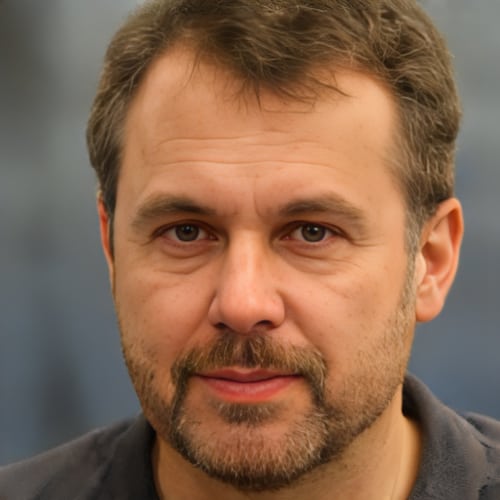Bed bugs spread primarily through human activity, hitchhiking on luggage, clothing, furniture, and other personal belongings. They do not attach themselves to people or animals but can quickly move to new locations as items are transported. This post will discuss how bed bugs exploit our daily routines and travel habits to spread, highlighting prevention and early detection strategies.
POINTS
- Bed bugs are notorious for their ability to spread rapidly, primarily by “hitchhiking” on personal items such as luggage, furniture, and clothing. They can rapidly infest new areas if given the opportunity.
- Although bed bugs can’t live on humans, they can easily cling to a person’s clothing or personal items and thereby be transported to new infestation sites.
- Regular cleaning and proactive monitoring can help prevent the spread of bed bugs. Key prevention strategies include regularly washing clothing and bedding in hot water, vacuuming thoroughly, and isolating any suspected infestation areas.
- If an infestation does occur, early and comprehensive action is essential. Applying bed bug-specific insecticides, professional pest control services, and high-heat washing and drying can effectively eliminate bed bugs.
- Bed bugs can infest anyone, anywhere. They are not signs of poor sanitation. All they require is a human host and hiding places such as mattresses, furniture, or tiny cracks in the wall. Understanding their behavior is crucial to prevention and control.
How Do Bed Bugs Spread?
Bed bugs are tiny, elusive pests known for their blood-sucking habits. While not entirely nocturnal, they prefer to operate under the cover of darkness, making detecting them particularly challenging. Despite their small size, bed bugs can become a severe problem in households because of their fast reproduction rate and their resilience. They can thrive for months without feeding, comfortably nesting in your beds, furniture, and clothes.
Bed bugs are notorious hitchhikers. They latch onto anything they can in an infested area. Let’s dive into the common ways these little travelers spread.
| Method of Spread | Description | Prevention Tips |
|---|---|---|
| Luggage | Bed bugs hitch a ride on luggage when it’s placed in infested areas, such as hotel rooms. | Use luggage covers, inspect and vacuum luggage upon returning home. |
| Furniture | Moving or second-hand furniture can harbor bed bugs if previously in an infested environment. | Inspect and treat second-hand furniture before bringing it into your home. |
| Clothing | Clothes left on beds or floor in infested areas can pick up bed bugs. | Keep clothes in sealed bags when traveling, wash and dry on high heat after returning. |
| Personal Items | Items like backpacks and purses can become carriers when stored in or near infested locations. | Regularly clean and inspect personal items, especially after visiting public places or during travel. |
| Adjacent Spaces | Bed bugs can move through wall voids, electrical outlets, and plumbing to adjacent rooms or units. | Seal cracks and crevices, use bed bug-proof mattress encasements, and monitor with traps. |
What are the common ways that bed bugs spread from one place to another?
Notable for their lack of wings, bed bugs cannot fly or jump. Instead, they move by crawling extremely fast. Their most usual method of spreading is through “hitchhiking” on personal items such as luggage, furniture, or clothing that has been in an infested area. Moving infested furniture can unknowingly introduce a bed bug infestation into your own home.
How do bed bugs travel on clothes, luggage, and furniture?
Bed bugs can easily attach themselves to clothing, luggage, and furniture. Their small, flat bodies allow them to hide in tiny crevices and folds within these items. If these objects are moved, bed bugs can spread very quickly.

How do bed bugs spread in homes, hotels, buses, and other public places?
In homes, bed bugs often hide in mattresses, box springs, bed frames, and even tiny cracks in the walls. In hotels, buses, and other public places, they take advantage of the numerous hiding spots offered in luggage racks, seat cushions, and cracks.
Furthermore, they also have an uncanny ability to move through plumbing pipes and electrical outlets. And if that wasn’t enough, they can travel through tiny cracks and crevices in walls and floors to move to adjoining rooms or apartments.
Can Bed Bugs Spread Directly from Person to Person?
Understanding how bed bugs move from person to person is essential in creating effective prevention strategies.
Can you get bed bugs from a person?
Though bed bugs are not known to live on humans, they can certainly hitch a ride on your clothes. So, in essence, yes, you can get bed bugs from an infested person if you come into close contact with their clothing.
Can bed bugs travel on clothes you’re wearing?
You bet! If a bed bug is on a piece of clothing or furniture that you come into contact with, it can quickly scramble onto your attire. Their flat bodies and fast crawling speed make it easy for them to hide in the folds of clothing.
Can bed bugs jump from person to person?
No, bed bugs cannot jump or fly. Any movement they make from person to person would be by crawling.
Can a person carry bed bugs?
While bed bugs don’t make their homes on humans, they can unknowingly be transported by people. An infested person’s clothing, luggage, or personal items can all serve as vehicles for these pests.
Are Bed Bugs Contagious?
The word “contagious” often brings to mind scenarios of catching a cold or the flu. But when dealing with bed bugs, it’s a bit different.
Are bed bugs considered contagious?
Not in the traditional sense. While you can’t “catch” bed bugs like a virus, they can move from one location to another conveniently via clothing, luggage, and furniture, rapidly infesting new areas.
Are bed bug bites contagious?
No, bed bug bites are not contagious. They might itch and be uncomfortable, but you can’t transfer them to another person.
How contagious are bed bugs?
Again, while not contagious in the traditional sense, bed bugs are exceptional at spreading quickly from one location to another when given the chance. It’s this rapid expansion that can make them seem ‘contagious.’
How Do Bed Bugs Move and Travel?
Understanding how bed bugs navigate their surroundings can offer invaluable insights into controlling and preventing an infestation.
How do bed bugs move in different environments?
In all types of environments, be it homes, hotels, or workplaces, bed bugs primarily move by crawling. These diminutive pests use their small, flat bodies to squeeze into tiny crevices and remain hidden until it’s time to feed.
Can bed bugs travel from house to house on their own?
While bed bugs lack the ability to fly or jump, they can still cover significant territory on foot. However, it’s not common for bed bugs to crawl from one house to another. They typically spread between homes through human transportation, such as via clothing, luggage, or furniture.
How fast do bed bugs spread?
Under the right conditions, bed bugs can spread very quickly. A single pregnant female can result in a full-blown infestation of over thousands in just a few months due to their fast reproduction rate and high egg production.
Can Humans Serve as Carriers for Bed Bugs?
Humans can sometimes unknowingly serve as perfect ‘vehicles’ for bed bug transportation.
Can humans carry bed bugs on their bodies?
Bed bugs are not known to live on human hosts. However, they can certainly hitch a ride on clothing or personal items, leading to the rapid spread of an infestation.
Can you bring bed bugs home on your clothes?
Unfortunately, yes. If your clothing has been left in an infested environment, bed bugs can easily hitch a ride and infest your home.
Can you catch bed bugs from a person?
You cannot ‘catch’ bed bugs like you do a cold or virus. However, if a person has been in an infested area, bed bugs could have latched onto their belongings, and these bugs could potentially infest your space if you come into contact with those items.
Preventing the Spread of Bed Bugs
Being proactive is key to preventing the spread of bed bugs. Here are some essential tips you need to know.
How to prevent bed bugs from spreading to other rooms?
To effectively prevent the spread of bed bugs to other areas, consider implementing the following strategies:
- Daily Cleaning Routine: Establish a habit of daily cleaning and decluttering to minimize hiding spots for bed bugs.
- Vacuum Regularly: Use a high-powered vacuum across all living spaces, with particular attention to beds, couches, and other furniture, to eliminate any lurking bed bugs or eggs.
- Heat Treatment for Bedding and Clothing: Wash and dry your bedding, clothes, and other fabric items at high temperatures regularly, as the heat effectively exterminates bed bugs.
- Isolate Infested Areas: If you detect signs of bed bug presence in a specific area, immediately isolate it to prevent further spread and contact a professional pest control service for targeted treatment.
How to prevent bed bugs from getting on your clothes?
To keep your clothes free of bed bugs, avoid placing them on the floor or on furniture in hotels or other public areas known for bed bug infestations. Whenever possible, opt to store clothing in airtight bags when travelling. Additionally, always promptly wash and dry clothes after returning from a trip.
How Easy is it to Get Bed Bugs and How Easy Do They Spread?
Bed bugs are sneaky and can easily go unnoticed until an infestation is significant.
How easily do bed bugs spread?
Unfortunately, bed bugs spread very easily. Their small size, rapid reproduction rate, and ability to survive without feeding for several months make them proficient infiltrators.
How Common Are Bed Bugs?
Getting bed bugs is more common than many would like to think. They are not tied to poor sanitation. All they need is a human host and places to hide. Infestations can start from a simple stay at a hotel, bringing home second-hand furniture, or even riding on public transport.
Can bed bugs be transferred from person to person?
While bed bugs themselves are not passed directly from person to person, infestations are. If a person has bed bugs on their clothing or personal items, those bugs can crawl off to infest a new location.
Getting Rid of Bed Bugs
If you find yourself dealing with a bed bug infestation, don’t despair. Here are some trusted means to eliminate them:
- Identify their hiding spots. Bed bugs can hide in mattresses, box springs, bed frames, and even tiny cracks and crevices in the walls. Once spotted, a high-efficiency vacuum can help remove bed bugs from these locations.
- Wash infested bedding and clothing in hot water and dry on a high heat setting. This will kill any bed bugs or eggs attached to them.
- Use a bed bug-specific insecticide on areas you cannot wash. Always use these products carefully, following the manufacturer’s instructions.
Finally, if the infestation is large or you’re not getting the result you need, hire a professional pest control company. They have the tools and knowledge to handle severe infestations.
What are the best practices for eradicating a bed bug infestation?
Eradicating a bed bug infestation requires a consistent and comprehensive approach. Best practices include careful inspection of all possible hiding sites, regular cleaning of bedding and furniture, and prompt treatment of infested areas.
Consider using mattress and box spring encasements to trap any remaining bugs inside, where they will eventually die. Keep in mind that DIY met



